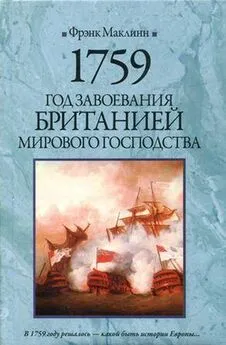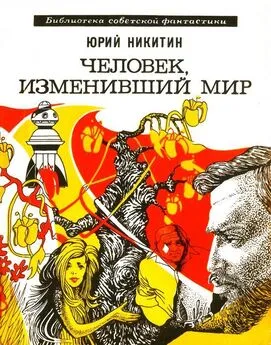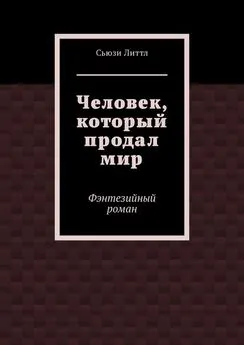Фрэнк Маклинн - Чингисхан. Человек, завоевавший мир
- Название:Чингисхан. Человек, завоевавший мир
- Автор:
- Жанр:
- Издательство:АСТ
- Год:2019
- Город:Москва
- ISBN:978-5-17-095186-4
- Рейтинг:
- Избранное:Добавить в избранное
-
Отзывы:
-
Ваша оценка:
Фрэнк Маклинн - Чингисхан. Человек, завоевавший мир краткое содержание
Чингисхан. Человек, завоевавший мир - читать онлайн бесплатно ознакомительный отрывок
Интервал:
Закладка:
924
Wittfogel & Feng, Liao p. 554.
925
Gernet, Chinese Civilization p. 354.
926
Mote, Imperial China pp. 200–202.
927
Pelliot, Notes sur Marco Polo I pp. 376–390; P. Huang, 'New Light on the Origin of the Manchus,' Harvard Journal of Asiatic Studies 50 (1990) pp. 239–282.
928
Tao, Jurchen pp. 21–22.
929
Barfield, Perilous Frontier p. 179.
930
Barfield, Perilous Frontier p. 179.
931
Respectively, Barfield, ibid. p. 179 and Mote, Imperial China p. 211. Nevertheless, one can argue that the Liao must have ignored many warning signs. Their armies had been heavily defeated by the Jurchens in 1026 when they had provoked the tribes of Manchuria by a plundering raid (Wittfogel & Feng, Liao p. 588).
932
Mote, Imperial China pp. 195–197.
933
Mote, Imperial China pp. 203–214; Grousset, Empire p. 137.
934
Franke & Twitchett, Cambridge History p. 279; Mote, Imperial China pp. 223–224.
935
Sechin Jagchid, 'Khitan Struggles against Jurchen Oppression: Nomadization versus Sinicization,' Zentralasiatische Studien 16 (1982) pp. 165–185.
936
Wittfogel & Feng, Liao p. 634.
937
The zigzag course in and out of sinicisation pursued by the Jin is traced in Mote, Imperial China pp. 226–243; Hok Lam Chan, Legitimation in Imperial China. Discussions under the Jurchen-Chin dynasty, 1115–1234 (1984) pp. 55–72, 116. See also Jung-Chen Tao, Jurchen in Twelfth-Century China.
938
Franke & Twitchett, Cambridge History pp. 315–319; Tao, Jurchen pp. 41–44.
939
Mote, Imperial China p. 237.
940
Franke & Twitchett, Cambridge History pp. 205–206.
941
Sechin Jagchid, 'Patterns of Trade and Conflict between China and the Nomads of Mongolia,' in Jagchid, Essays pp. 3–20; Jagchid & Symons, Peace, War and Trade.
942
Sechin Jagchid, 'The Historical Interaction between Nomadic People in Mongolia and the Sedentary Chinese,' in Seaman & Marks, Rulers from the Steppe pp. 63–91.
943
For the Jin-Song wars see Lorge, War, Politics and Society pp. 53–56; Mote, Imperial China pp. 207–209, 299–304; Franke & Twitchett, Cambridge History pp. 235–249.
944
Mote, Imperial China pp. 287, 394.
945
Chou, Economic History pp. 102–104. For the world systems approach see McNeill, In Pursuit of Power.
946
Tao, Jurchen pp. 108–109.
947
Mote, Imperial China p. 266. The entire subject of the population of medieval China is, not surprisingly, disputed territory. Martin, Rise of Chingis Khan p. 125 gives a a figure of 48,490,000 for the Jin but argues that the population must have been much larger, as the census figures do not include the very poor or the many tax evaders.
948
Franke & Twitchett, Cambridge History pp. 302, 313–315.
949
Franke & Twitchett, Cambridge History p. 302.
950
Tao, Jurchen pp. 90–91.
951
Wittfogel & Feng, Liao pp. 553, 669.
952
Franke & Twitchett, Cambridge History pp. 294–298.
953
Needham, Science and Civilization I p. 68.
954
Tregear, Geography of China pp. 218–219.
955
Elvin & Cuirong, Sediments of Time pp. 554–560; Lorge, War, Politics and Society p. 147.
956
Grousset, Rise and Splendour p. 303; Martin, Rise of Chingis pp. 125–126.
957
Franke & Twitchett, Cambridge History pp. 245–249.
958
Brook, Troubled Empire pp. 26, 65, 80, 82, 260.
959
Возможно, Хань Довей, которого по приказу императора Нин-цзуна казнили, а голову, покрытую лаком, в шкатулке отправили чжурчжэням. — Прим. авт .
960
Franke & Twitchett, Cambridge History pp. 245–249.
961
Buell, Dictionary pp. 24, 172–175.
962
Rachewiltz, In the Service p. 113.
963
Ratchnevsky, Genghis Khan pp. 106, 250–251.
964
Rachewiltz, 'Personnel and Personalities in North China in the Early Mongol Period,' Journal of the Economic and Social History of the Orient 9 (1966) pp. 88–144 (at p. 98).
965
Lattimore, Mongol Journeys pp. 128–129.
966
Pelliot, 'Chretiens d'Asie centrale et d'Extreme-Orient,' T'oung Pao 15 (1914) pp. 623–644 (at p. 631); Halbertsma, Early Christian Remains pp. 150–157.
967
Pelliot & Hambis, Campagnes pp. 181–182.
968
Martin, Rise of Chingis pp. 114–115.
969
d'Ohsson, Histoire I p. 122.
970
Martin, Rise pp. 120–121.
971
Lattimore, 'The Geography of Genghis Khan,' Geographical Journal 129 (1963) pp. 1–7.
972
Mote, Imperial China pp. 284–288.
973
Bartold, Turkestan pp. 393–396; Vladimirtsov, Genghis pp. 76–77.
974
Thomas Allsen, 'The Yuan Dynasty and the Uighurs of Turfan,' loc. cit. pp. 243–280.
975
H. D. Martin, 'Chingis Khan's First Invasion of the Chin Empire,' Journal of the Royal Asiatic Society (1943) pp. 182–216 (esp. pp. 190–192).
976
Lattimore, Mongol Journeys p. 126.
977
Lattimore, Mongol Journeys p. 126.
978
On this point Genghis has at least one modern supporter. Gumilev, Imaginary Kingdom (p. 175) compares the genocide attempted by the Jin in those years to the slaughter of Indians by the Puritans of New England in the seventeenth century and of the Patagonian Indians by the Argentine government in the late nineteenth.
979
Martin, Rise pp. 101, 149.
980
d'Ohsson, Histoire I p. 128.
981
JR II p. 954.
982
Gaubil, Gentchiscan p. 16.
983
Mongol numbers are always disputed. The population of medieval Mongolia has been estimated as anything from 700,000 to two million (I incline to the latter figure). If we assume a rough-and-ready one-in-ten figure for military mobilisation that would provide purely Mongol armies of between 70,000 and 200,000.
984
For a modern analysis of the resources of the Gobi see Hedley, Tramps pp. 92, 239.
985
Rachewiltz, In the Service pp. 3–4.
986
Pelliot, 'Chretiens d'Asie centrale,' loc. cit. pp. 623–624; Saeki, Nestorian Documents pp. 423–427; d'Ohsson, Histoire I p. 129.
987
Martin, Rise p. 133.
988
For the geography of this area see Lattimore, Inner Asian Frontiers pp. 21–25.
989
Van Oost, Au pays des Ortos.
990
Arthur Waldron, 'The Problem of the Great Wall of China,' Harvard Journal of Asiatic Studies 43 (1983) pp. 643–663; Buell, Dictionary p. 171; Herrmann, Historical Atlas p. 39; Haw, Marco Polo's China pp. 52–54; Pletcher, Geography of China p. 95; Waldron, Great Wall; Lovell, Great Wall; Rojas, Great Wall; Man, Great Wall.
991
Martin, Rise p. 134.
992
Lattimore, Inner Asian Frontiers pp. 543–546.
993
Martin, Rise pp. 133–134.
994
Martin, Rise pp. 135–136.
995
Rachewiltz, Commentary p. 890.
996
Чаще встречается другое имя — Хушаху. — Прим. пер .
997
Wittfogel & Feng, Liao p. 521.
998
RT I pp. 216–217.
999
Rachewiltz, In the Service p. 4.
1000
JR II pp. 956–957.
1001
Krause, Cingis Han p. 30.
1002
Martin, Rise pp. 141–142, 336–337.
1003
Waley, Travels of an Alchemist pp. 62–63.
1004
RT I p. 217.
1005
Martin, Rise pp. 142–143; d'Ohsson, Histoire I p. 131.
1006
Rachewiltz, Commentary p. 891.
1007
SHO p. 234; SHR p. 175; Martin, Rise p. 143.
1008
May, Mongol Conquests p. 225. For the similarity (but not identity) of these Chinese horses to the Mongol ones see Hyland, Medieval Warhorse pp. 126–127; Herrlee G. Creel, 'The Role of the Horse in Chinese History' American Historical Review 70 (1965) pp. 647–662; S. Jagchid & C. R. Bawden, 'Some Notes on the Horse Policy of the Yuan Dynasty,' Central Asiatic Journal 10 (1965) pp. 246–268.
1009
Martin, Rise p. 144.
1010
Harlez, Histoire de I'empire de Kin pp. 208–209.
1011
Olbricht & Pinks, Meng-ta pei-lu p. 61.
1012
Olbricht & Pinks, Meng-ta pei-lu pp. 58, 187.
1013
For Subedei's exploits in 1211–12 see Gabriel, Subotai p. 17.
1014
Grousset, Empire pp. 228–229.
1015
RT I pp. 215–216.
1016
Krause, Cingis Han p. 74.
1017
SHO p. 234; SHR p. 175.
1018
Martin, Rise pp. 146–147.
1019
There are good descriptions of the geography of Shaanxi in Millward, Beyond the Pass.
1020
Martin, Rise pp. 149–150.
1021
Martin, Rise p. 150.
1022
Buell, Dictionary pp. 28–29, 2.89.
1023
Mark C. Elliott, 'The Limits of Tartary: Manchuria in Imperial and National Geographies,' Journal of Asian Studies 59 (2000) pp. 603–646; Parker, A Thousand Years pp. 249–250.
1024
Carl Sverdrup, 'Numbers in Mongol Warfare,' Journal of Medieval History 8 (2010) pp. 109–117 (at pp. 115–116).
1025
Lattimore, Inner Asian Frontiers p. 113.
Читать дальшеИнтервал:
Закладка:



![Ксения Чепикова - Человек, научивший мир читать [История Великой информационной революции]](/books/1059757/kseniya-chepikova-chelovek-nauchivshij-mir-chitat-ist.webp)



